
Полная версия
The most detailed guide around Circum-Baikal Railroad: Irkutsk, Listvyanka, Slyudyanka, Shelekhov
Twice Hero of the Soviet Union N.V. Chelnokov (1906—1974)
Ahead appeared the building of one of the most beautiful passenger stations in Russia – Irkutsk. It was built in 1907 according to the project of architect V.I. Kolyanovsky, and which is undergoing a complete reconstruction in our time (Chelnokova Str., 1). Above the station, on a steep slope, the small Saint Nicholas and Innocent Church froze. It became the first temple that arose in Irkutsk on the left bank of the Angara.
Irkutsk railway station, old (right) and new (left), 1907
Previously, the residents of the Glazkovo suburb were forced to cross the tempestuous waters of the river, sometimes risking their lives in order to be able to pray at the nearby Holy Trinity Church (5 Armii Str., 8). Therefore, in 1859, at the expense of the merchant of the 3rd guild, Y.S. Malkov, on the left bank of the Angara, a new stone temple was built in the classical style (Profsoyuznaya Str., 45A).
Praam on the Holy Trinity ferry, 1890
With the arrival of the railway in Irkutsk, the population of the city doubled, and the church became small for all parishioners, but due to lack of funds and the Russian Revolution, plans for enlargement were not destined to come true. In 1934, the emergency building was closed and «Zarya» cinema was opened in it. Only in 2003 the temple was restored and returned to believers at the expense of the East Siberian Railroad.
Saint Nicholas and Innocent Church, 1900
At the tram ring, we turn sharply to the right – onto the street named after the world’s first female cosmonaut V.V. Tereshkova. In the past, this street was called Krugobaikalskaya, and since 1801 the main route from Irkutsk to China called «Circum-Baikal» began from here. It started right from Troitsky ferry on the site of the modern station and went up to the Kaya mountain. Since then, the width of the street has remained the same.
Krugobaikalskaya Street in the begining of XX century
Up the street on the right side of the road, the last wooden house attracts attention, where the famous Siberian writer I.I. Molchanov-Sibirsky (Tereshkova Str., 20) lived. Opposite, at the turn of the tram rails, once happened the worst disaster on public transport in the history of Irkutsk. On May 1, 1953, during the opening of a branch line of route No. 1 to Studgorodok, the brakes failed on a crowded tram. At full speed on the turn, it rolled over and hit the wall. The tragedy was hushed up by the authorities, and the number of dead is still unknown. After this event, the branch was launched in 1961, and only when the slope of the road was minimized.
Writer I.I. Molchanov-Sibirsky (1903—1958)
At the intersection with Gogolya Street, a children’s clinic No. 5 construction is underway. In 1971, the cinema «Chaika» was built on this site, named after the space call sign of V.V. Tereshkova. Opposite across the road is a small Peter and Paul Church, which appeared on the site of a magnificent wooden church, transferred here from the village of Mikhalevo in 1918. It was originally built in 1911 by the architect F.F. Koshtyal in the Art Nouveau style on the territory of the Mikhalevo’s military camps 26 km south of Irkutsk, where the 7th East Siberian Rifle Division took summer training. Today, at that place is Kurminsky Bay – the largest on the Irkutsk reservoir. In 1990, the temple was dismantled for restoration, and burned down. Today, funds are being raised for the restoration of the monument (Gogolya Str., 42).
Peter and Paul Church in Mikhalevo, 1911
We turn right and find ourselves on Gogolya Street. On the right hand, a large complex of buildings attracts attention. From 1935 to 2002 it belonged to the main pasta factory in Irkutsk. Every day, about 50 tons of products were produced here, almost 300 people worked. Today the fate of buildings is being decided (Gogolya Str., 35).
On the other side of the road is another old trading platform of Irkutsk – the Sverdlovsk market or the Glazkovsky shopping arcade, which opened on this site in 1903. As before, in more than 200 pavilions you can buy any food and goods (Gogolya Str., 44).
Behind the market on the right, you can see the building of another old school (Gogolya Str., 33), built in 1902 according to the project of V.A. Rassushin for the needs of the Saint Vladimir School, which previously occupied a room near the railway. Initially, it was based on the funds of V.P. Sukachev in 1888 in honor of the 900th anniversary of the Christening of Russia. Nowadays, an educational institution is still located here – children’s music school No. 3.
Saint Vladimir school
At the crossroads we turn left onto Kaiskaya Street to the intersection with 2nd Zheleznodorozhnaya, where you can see one of the most beautiful wooden houses in Glazkovo belonged to F.S. Shachkov, built in 1910 (Kaiskaya Str., 24). Directly opposite it, across the road until 2019, you could see the house of the Irkutsk Baptist Church, which appeared here back in 1944, but only at the beginning of the 21st century moved to a nearby modern stone building (Kaiskaya Str., 5). Today there are four Evangelical churches in the Irkutsk.
Evangelical Church
At this point we will turn left onto the street named after the great Russian poet M.Y. Lermontov. On the right hand, we will definitely visit the Irkutsk nerpinarium (2nd Zheleznodorozhnaya Str., 66), where since 2004 the Baikal seals (nerpa) have been demonstrating their unusual abilities to visitors. At the same time, the cost of tickets for the performance is lower than in Listvyanka.
Having passed the Cosmonauts Square, where a monument to V.V. Tereshkova appeared in 2022, at the next intersection we will find ourselves at the Gorky House of Culture (Klara Zetkin Str., 13A). It was built in 1967 on the site of the old Glazkovsky cemetery, which previously occupied the territory of the modern Griboyedovskaya grove. During its existence, about 10 thousand Irkutsk people were buried here, as well as 25 Czech legionnaires, mostly killed during combat skirmishes with the Red Army in May 1918. In fact, no grave monuments have been preserved, apart from rare fragments that can be found throughout the area of the grove. Contrary to the general delusion, the student hostel, the children’s polyclinic and the garden that follows the House of Culture are not «built on bones.»
Czechoslovak burials at the Staro-Glazkovskoye cemetery
Having reached the tram tracks, we will turn left down Schmidt Street towards the Angara. On the descent you can see many magnificent wooden houses. Unfortunately, among all this beauty, only one house of Rublev (Shmidt Str., 9) is recognized as a monument.
Having passed the temporary detention center (Gogolya Str., 53Б), as well as the student hostel (Pushkina Str., 62A), we will turn onto Profsoyuznaya Street, already familiar to us, formerly known as Aleksandrovskaya, named after Emperor Alexander II, who was killed in 1881. In the past, many celebrities in Irkutsk had summer houses («dacha») along this street, such as mayors V.P. Sukachev, V.V. Zharnikov and B.P. Shostakovich. On the land of the latter in 1910 the therapeutic department of the railway hospital was built, which is one of the most striking wooden modernist buildings in the city. It meets us second on the left side of the road (Profsoyuznaya Str., 87Д).
Old railroad hospital
We rest against one of the entrances to the grove «Zvesdochka». This park got its name back in 1861 after the «zvesdochka» of fireworks, which were so loved by the first owner of this suburban area Governor-General of Eastern Siberia M.S. Korsakov. In 1925, during archaeological excavations in the territory of the garden L.N. Ivaniev discovered many Paleolithic ceramic adornments and utensils, as well as bronze cauldrons, swords and knives.
Moving along the grove up by Zvezdinskaya Street, we pass on the right hand the modern school No. 80 (Pushkina Str., 64), the project of which, created in 2001 by architects E.I. Grigorieva and S.V. Mullayarov, received many gold diplomas and several state awards. Previously, the school was located in the neighboring building of the music department of the college of teacher education, built in 1936. Here studied L.I. Gaidai before was expelled for behavior, and during the WWII, an evacuation hospital was located here (Zvezdinskaya Str., 12).
On the opposite side of the road, behind a wooden building, you can see an old stone building, which was built in 1916 according to a typical design by engineer K.V. Mital for Lomonosov School (Gogolya Str., 55). It is still used for educational purposes as Irkutsk Regional College of Pedagogical Education. It has repeatedly been awarded the gold medal «European Quality of Education» and included in the list of «100 best colleges» in Russia.
Lomonosov School and the monument to K.K. Rokossovsky
Opposite it you can see the bust of K.K. Rokossovsky, which was installed in 2015 on the closed territory of Irkutsk Higher Military Aviation Engineering School (IHMAES), and three years later it was moved here. This is not by chance, because it was in this building that in 1920 the headquarters of the 30th cavalry regiment of the 5th Army was located which was under the command of the future marshal. Many things connected K.K. Rokossovsky with Irkutsk. In this city, he received his first Soviet award – the Order of the Red Banner, his first true love, Y.S. Brylovskaya, lived here, who gave birth to his son Victor.
Having passed the semi-antique guest house on Zvezdinskaya Street, we will return to Lermontov Street and at the Sports Palace «Izumrud» we will again turn to Angara River (Chernyshevsky Str., 12). The latter is under the jurisdiction of the Irkutsk State University of Communications (IrSUC), whose unusual building we will see a little lower down the slope (Chernyshevsky Str., 15). This educational institution appeared in 1975 due to an acute shortage of engineers during the resumption of the construction of the Baikal-Amur Magistral (BAM).
Irkutsk State University of Communications
At the intersection with Belinskogo Street, there is a small but very picturesque two-story house of Syskov (Belinskogo Str., 1) built at the end of the 19th century. Next, near the bank of Angara, we turn right after the rails of Trans-Siberian Railway. In front of the intersection with Zhukovskogo Street, there are two beautiful wooden houses built in 1915 (Gerzen St., 16 and 18). The first belonged to the clerk of the traffic service of Trans-Baikal Railway A.S. Dubenevich, and the second to a certain Vishnyakova.
House of A. S. Dubenevich
Having reached the end of Herzena Street, we will find ourselves at the ancient border of the Glazkovo suburb. From the side of the Angara River, since 1890, there was a favorite place for summer recreation of Irkutsk people – «Tsar’ Devitsa» garden. It was named after the historical figure of Maria Titova, who lived in the 19th century, who left at home alone without a father and hacked to death with an ax five robbers who got into her room at night. The park operated a restaurant with drinks, light snacks and confectionery, as well as a photo pavilion. However, a few years later, when a railway passed along the park, and the smoke from passing steam locomotives began to pester the guests, the place lost its popularity, and in 1910 it was closed for debts. In 1930, the first broadcast radio station in Irkutsk appeared in the garden, and it’s still there today (Radiostantsiya 5 Str., 1).
Garden «Tsar Devitsa», 1908
Slightly upstream of the Angara, next to the park, was the village of Titovo, which today is reminiscent of several wooden houses at the very edge of the railway along Lesia Ukrainka Street. The first settlement at this place was mentioned by the ambassador to China N.G. Melescu-Spafari in 1675. It was also inhabited in the earlier eras of the Bronze, Iron, Neolithic, Early Metal and Mesolithic, as evidenced by the collection of ceramics and stone tools collected here.
Radio Station No. 5
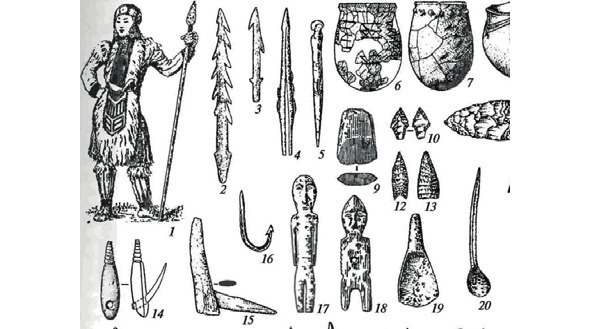
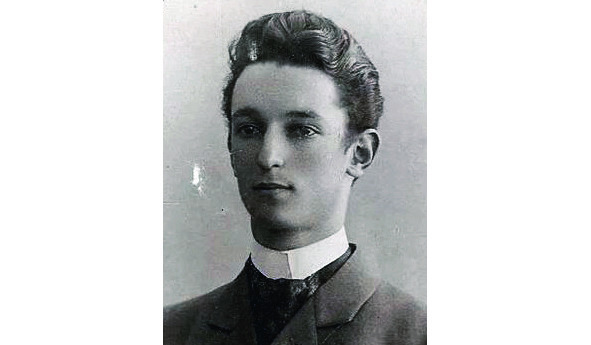
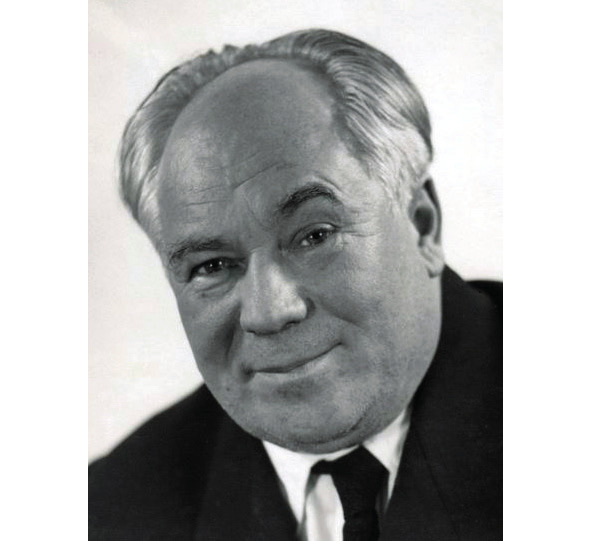
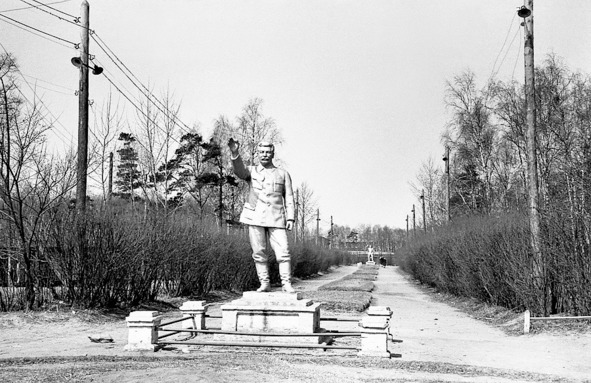
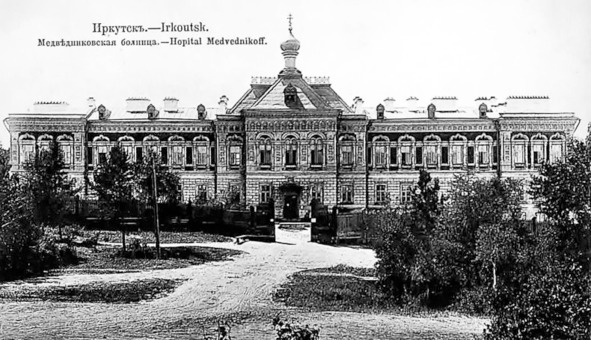
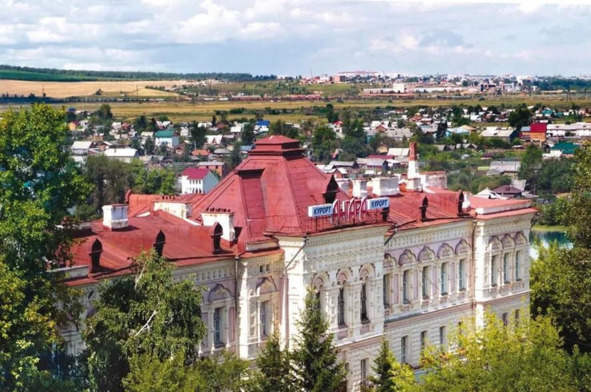

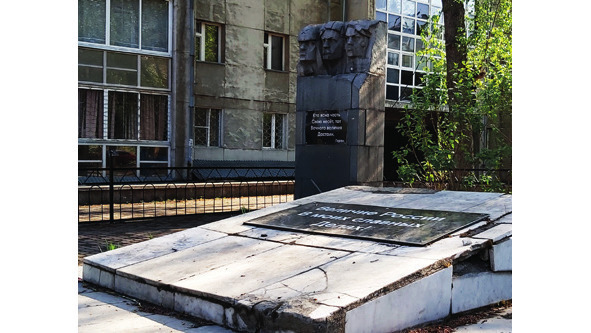
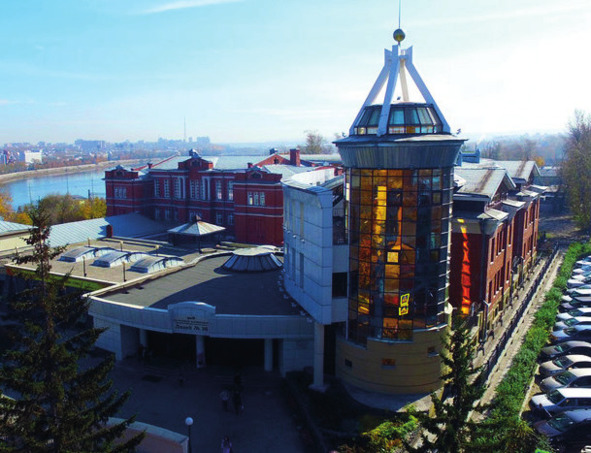
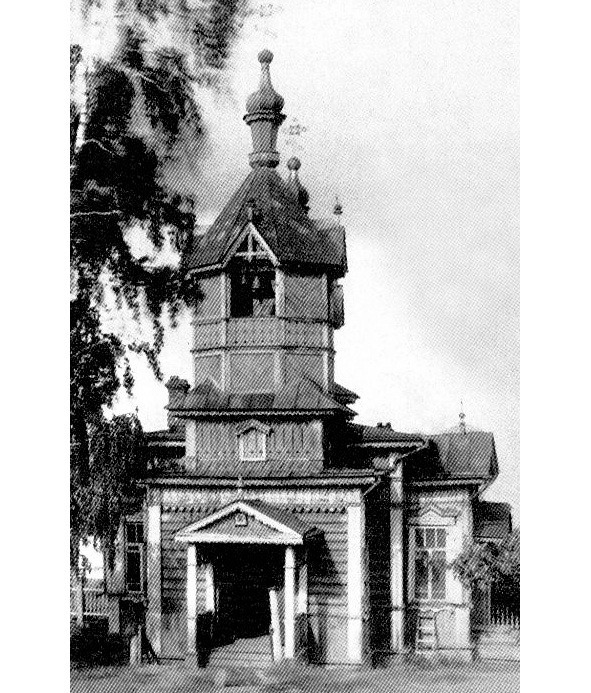
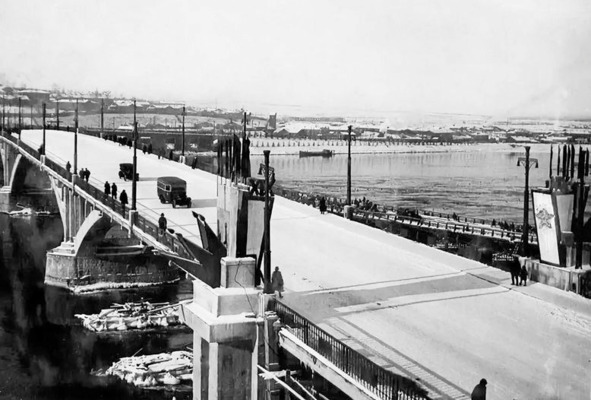
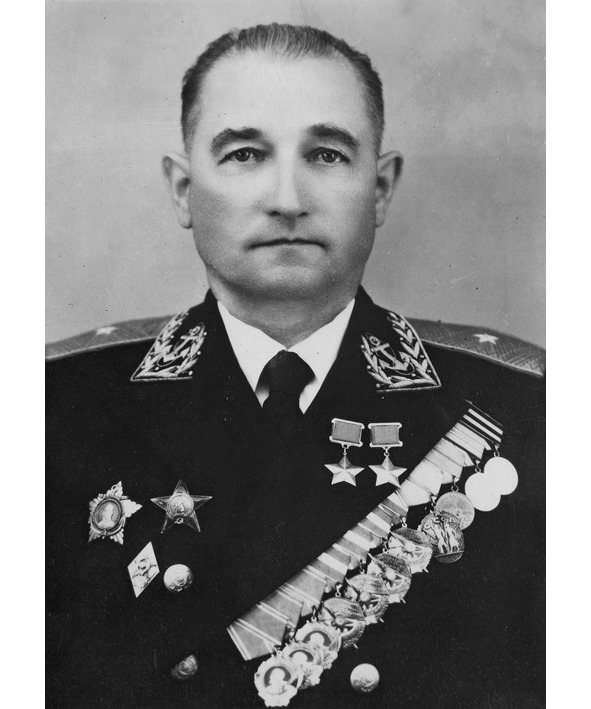
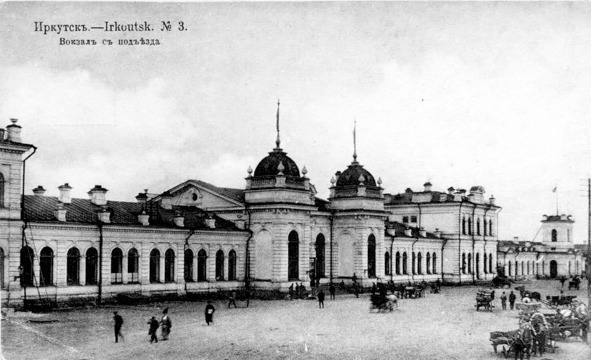
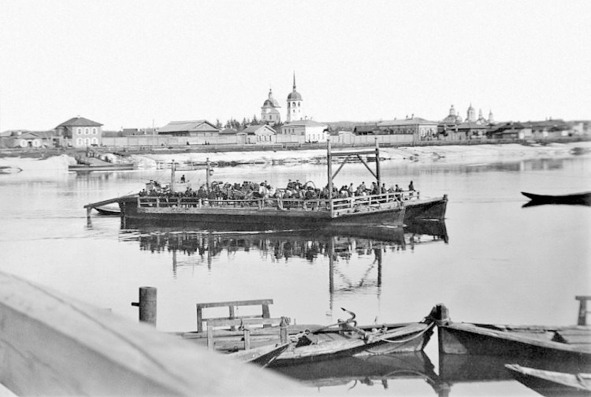
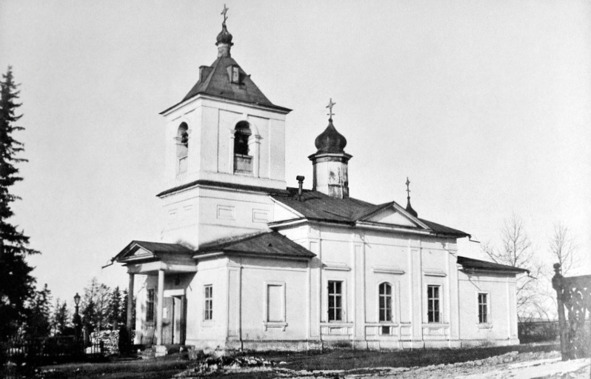
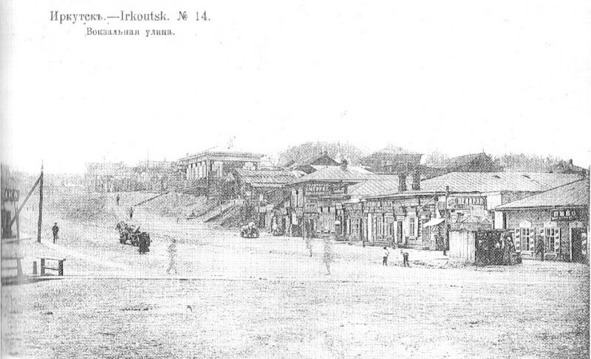
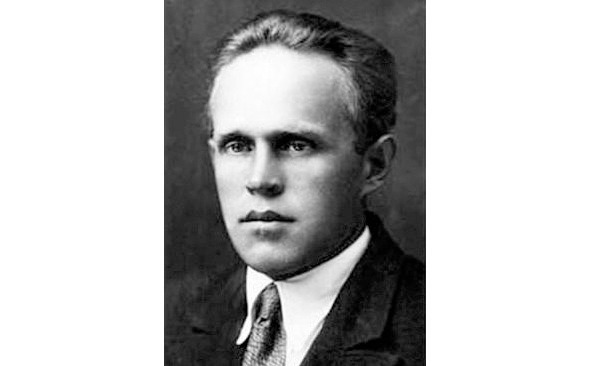
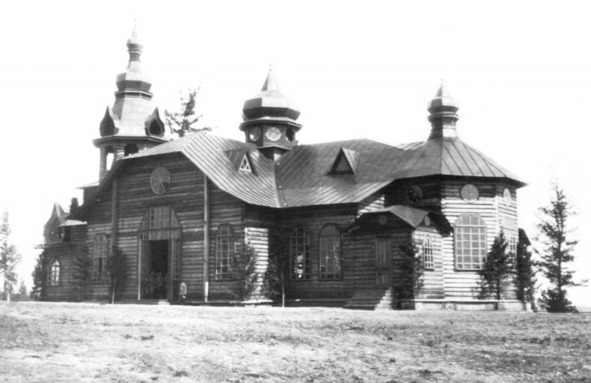
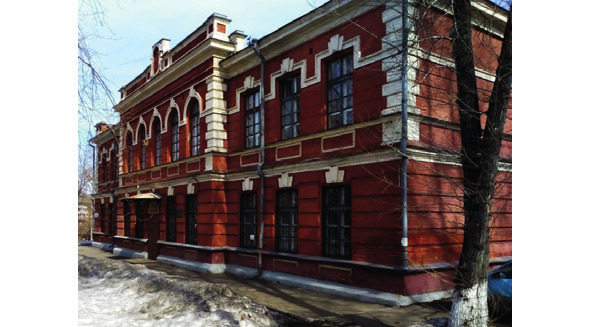
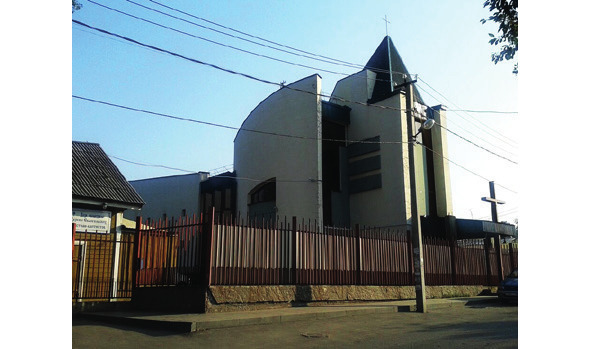
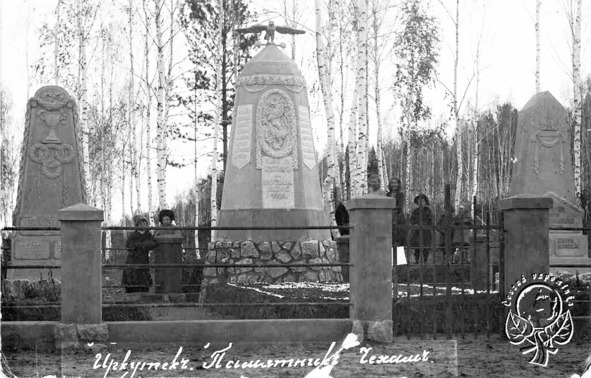
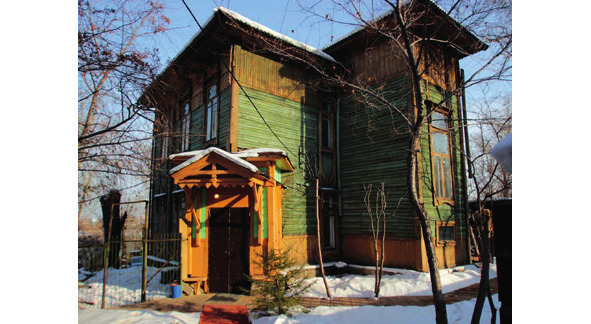
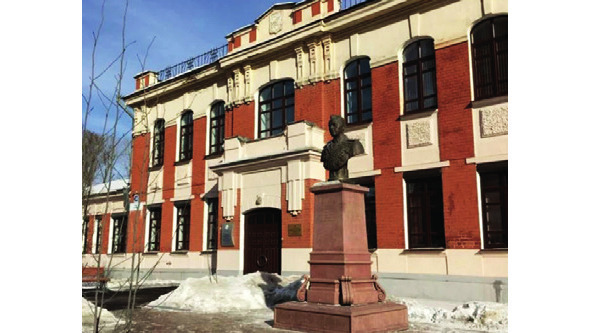
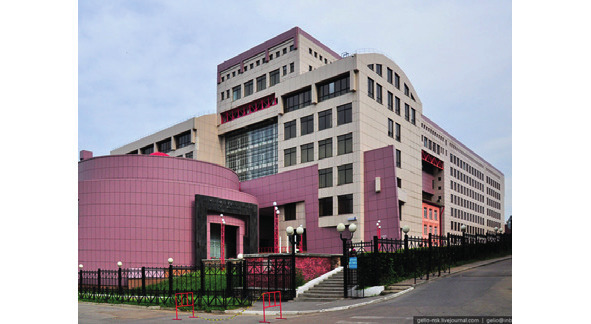
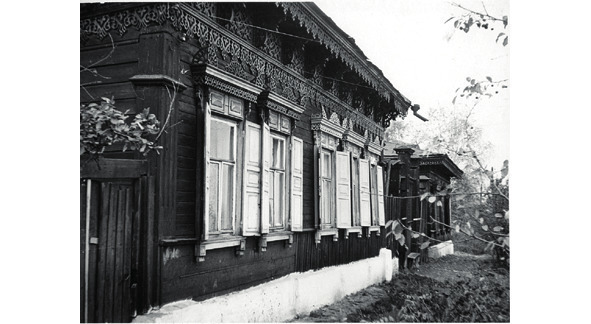
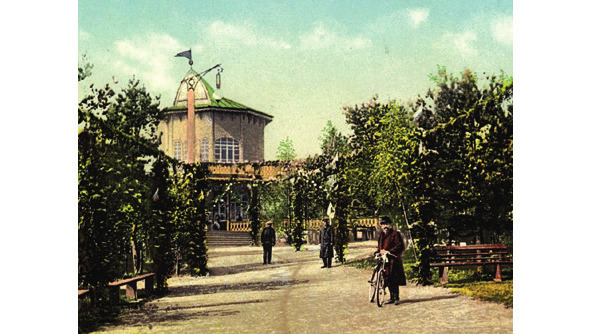
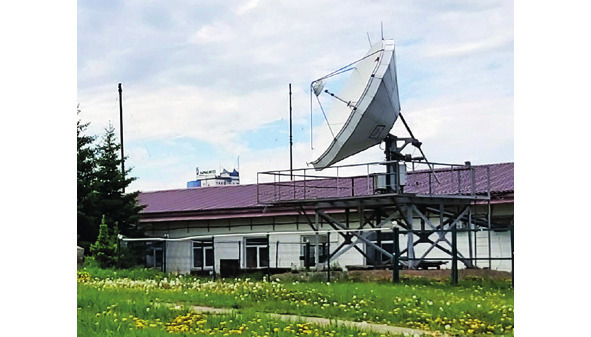
Studgorodok Microdistrict
From here we get to the Studgorodok microdistrict, on the territory of which there are 17 student dormitories today, the first were built in 1957. Moving up Lomonosova Street, at one of the turns you can still find a monument hidden from prying eyes on a mass grave where were burried brother-in-law of P.P. Postyshev and the first chairman of the Siberian Extraordinary Commission I.S. Postolovsky, along with his six comrades. They were hanged on August 3, 1918 in revenge for the execution of participants in the anti-Bolshevik uprising and buried on the outskirts of the city near the former garden «Tsar Devitsa» (Lomonosova Str., 70).
Grave of I.S. Postolovsky
To the left on the hill rises the huge building of the Irkutsk National Research Technical University (INRTU), which appeared here in 1957 and today is one of the 300 best higher educational institutions in the world (Lermontova Str., 83). He was the first in Siberia to create the Eurasian Open University on its basis, so graduates, in addition to the usual diploma, receive an international document. Every year more than 30 thousand students study within the walls of this institution. Among the famous graduates of the educational institution, the pilot and Hero of the Soviet Union G.S. Aseev, aircraft builder L.A. Khvorostukhin, scientist-metallurgist E.P. Bochkarev, writer G.N. Mashkin, General Director of the Ulan-Ude Shipbuilding Plant G.I. Tsukanov, as well as the first Soviet woman who climbed to the top of Everest – E.N. Ivanova.
Irkutsk National Research Technical University, 1978
Today, on the first floor of the university, in wing «B», from the side of Igoshina Street, there is the largest mineralogical museum in Siberia, the collection of which includes more than 27 thousand exhibits. The basis for the creation of the exposition in 1930 was the collections of the oldest geologists of Siberia – V.I. Tikhomirov and A.V. Lvov. Since 1991, the institution has been named after A. V. Sidorov, Associate Professor of the Department of Geology at INRTU, who significantly expanded the collection. Opposite the entrance to the museum, you can see a small cross, installed in 1999 on the site of the proposed construction of a youth church in the name of Saint Sergius of Radonezh.
Mineralogical Museum of INRTU
On the other side of the road from the university, you can see the silhouette of the Catholic Cathedral of the Immaculate Heart of the Mother of God, built in 2000 according to the project of the Polish architect Andrzej Chwalibog and funded by the communities of Russia, Poland, Germany, Italy and Slovakia (Griboedova Str., 110). It is here that today is the center of the diocese of St. Joseph – the largest in terms of area in the world (about 10 million km). The altar in the temple is made of Baikal jade, and on the sides of it are the statues of the Mother of God of Fatima and St. Joseph the Betrothed. 2
Cathedral of the Immaculate Heart of the Mother of God
On the north side of the cathedral you can see the Chapel of Reconciliation and Peace with a bronze sculpture of Jesus Christ by the Polish sculptor Vincenta Kuchma. At the base of the slab of black dolerite with inscriptions in Russian and Latin, there are urns with earth from the mass graves of prisoners of 14 «GULag « (chief administration of the camps).
Chapel of Reconciliation and Peace
We continue our way down Lermontov Street and move towards the Trans-Siberian Railway, which turns sharply here to the west, which passed this way in 1949. Until 1957, the rails ran along the left bank of the Angara to Baikal itself. There we will go further, restoring the history of the old road step by step. During the laying of the turn of the Trans-Siberian Railway near the Angara coast, one of the largest burials of the Paleolithic times (22 thousand years old) was discovered, about 40 thousand finds were collected.
Next to the viaduct on the left we can see the building of the Lyceum of the Irkutsk State University (hereinafter ISU), which opened here in 1995 and today is among the 200 best schools in Russia (Akademika Kurchatova Str., 13A). On the right hand is the East Siberian Institute of the Ministry of Internal Affairs of the Russian Federation, founded on this site in 1962. Today it is the leading educational institution in Eastern Siberia that trains law enforcement officers (Lermontova Str., 110).
East Siberian Institute of the MIA
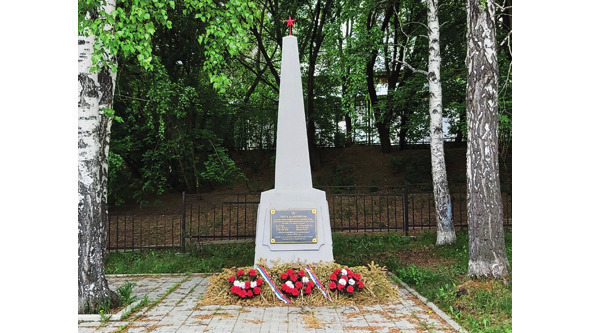
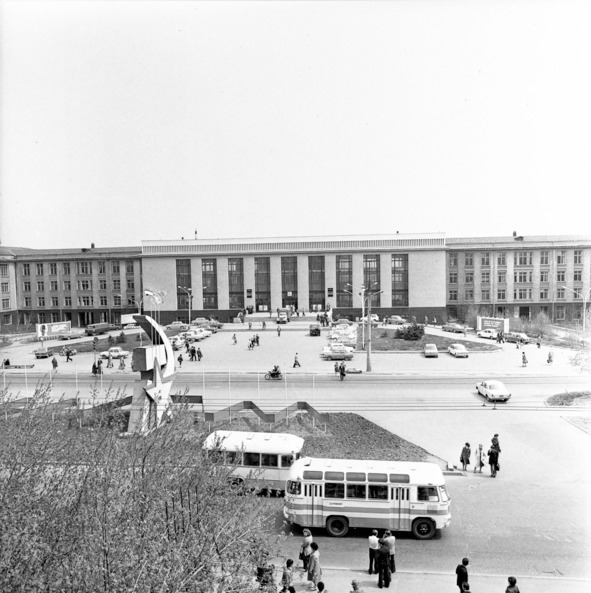
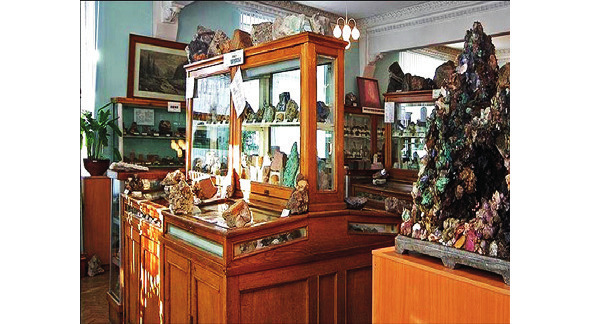
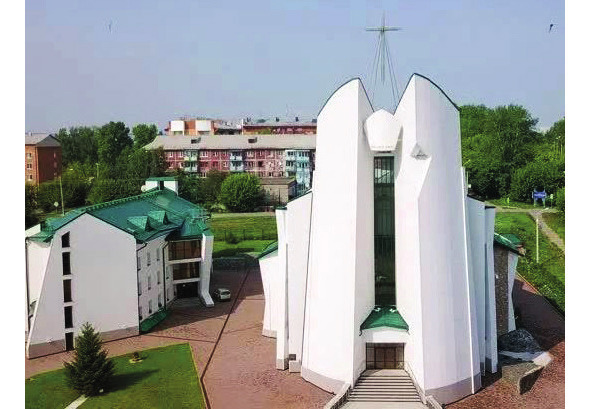
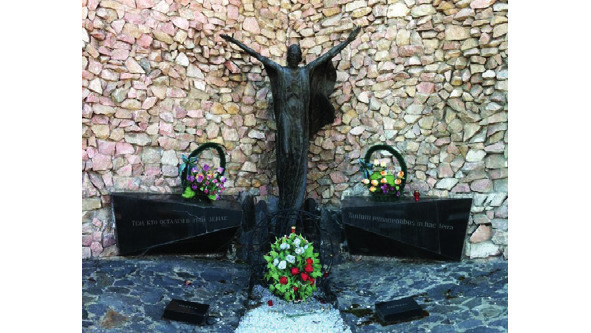
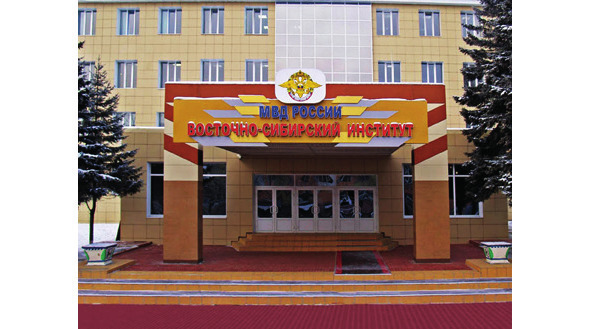
Academgorodok Microdistrict
It’s time to get acquainted with the most prestigious area of the city of Irkutsk – Akademgorodok. It appeared in February 1949 on the basis of the first two scientific institutes. They were supposed to become the center of the Siberian Branch of the Russian Academy of Sciences (SB RAS). However, fate decreed otherwise, and it was transferred to Novosibirsk in 1957. But 11 institutes that conduct research in the field of exact knowledge are still operating – more than 230 doctors and 660 candidates of sciences are working here.
The first houses in this area appeared in 1965. It was decided that the left side of Lermontova Street would be occupied by residential buildings, and the right side by scientific corps. At the same time, a unique arboretum was formed on the territory of Academgorodok with plants atypical for Siberia (ash, hornbeam, elm, svidina, bird cherry of Maak). The district plan was drawn up by the architect V.P. Shmatkov and subsequently modified by V.F. Bukh.
Akademgorodok Microdistric, 1970s
First on the left hand we are met by the Ice Palace «Iceberg», which opened in 2016 after 16 years of construction and a billion investments (Lermontov Str., 251). In 2020, a new winter sports ground called «Baikal» appeared next to it (Lermontov St., 249). The last one is twice bigger and six times more expensive, it can accommodate 6,000 spectators. Its construction was dedicated to the world bandy championship. The advantage is the possibility of re-equipment at any time for summer sports disciplines.
Following the sports complex rises the modern building of the library named after I.I. Molchanov-Sibirsky, which moved here in 2013. The book depository operates a self-issuing system for literature, a fumigatory, a leaf replenishing machine, modern scanners, and about 2 million items of storage. Every year the library holds more than 500 different events (Lermontov Str., 253).
Library named after I.I. Molchanov-Sibirsky
And on the other side of Lermontova Street there is a seven-story building of the scientific library of the ISU named after V.G. Rasputin, which since 2016, after the long-awaited move from the White House on the Angara embankment, has housed all four departments of the largest book depository in Eastern Siberia, numbering more than 2.5 million exemplares, some of which are older than Irkutsk itself. The construction of this facility began in 1981, but for a number of reasons it was postponed indefinitely. Today, students do not need to run around different parts of the city – here, in 11 reading rooms, you can find all the necessary information (Lermontova Str., 124).
Library named after V.G. Rasputin
Acquaintance with the educational institutions of Akademgorodok opens at the intersection with Ulan-Batorskaya Street, where on the right you can see the building in which, since 1974, the faculties of chemistry, geography, service and advertising of Irkutsk State University have been located (Lermontova Str., 126). Immediately behind it, in a small spruce grove, there is a memorial dedicated to the students and teachers of the university who died during the WWII. These two marble steles were set in the fall of 1979. Among the 27 indicated names, one can find the name of the Hero of the Soviet Union, Guardsman D.Z. Zhanaev, who died on the outskirts of Berlin.
Memorial to students and teachers of ISU
The Institute of Solar-Terrestrial Physics (Lermontova Str., 126A) showed a little higher. It was created in 1960 on the basis of the oldest magnetic observatory in Siberia. The main task of researchers is to establish the connection between phenomena on our planet and changes on the Sun. The employees of this institution create various forecasts regarding the state of the ionosphere and the Earth’s magnetic field. The employees have at their disposal facilities unique for Russia, such as the Large Solar Vacuum Telescope – the largest in Eurasia, the 256-antenna Siberian Solar Radio Telescope, the Irkutsk Incoherent Scattering Radar and the infrared telescope of the Sayan Solar Observatory.



